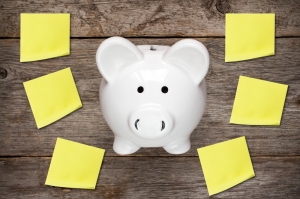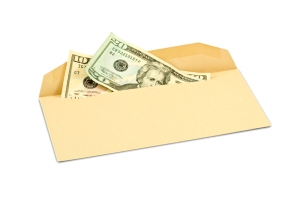
April is National Financial Literacy Month, an initiative aimed at instilling individuals and families with the foundation needed to make sound financial decisions. No matter where you are in your financial journey, this month offers the perfect chance to pick up some new financial tips – or reflect on money lessons that have made a life-long impact on you. It is often said that experience can be the best teacher, so we asked our staff: “What is a financial tip that has really stuck with you?” From maximizing the power of credit card rewards to simple budgeting techniques, here are some financial tips that our team swears by – and for good reason.
- “Avoid Lifestyle Inflation. When your income increases, resist the urge to upgrade your lifestyle immediately. Instead, direct that extra money toward savings, investments, and especially paying off revolving debt! Having too much revolving debt lowers your credit score considerably.” – Julianne Brandt-Olivier, Director of Lending
- “Treat your credit card like a debit card. If you have a rewards credit card, this tip can help you avoid interest charges and overspending while racking up your points or cash back. When you have a debit card, you can only spend what is in your checking account. By self-imposing this same limit on your credit card, you will not only avoid spending more than what you can afford – but you will also reap the benefits of charging purchases you can pay off immediately, to your rewards credit card. This helps your credit card work for you!” – Samantha Colella, Business Development Representative
- “Pay the balance on your credit card every week – not just once a month. I have an alarm set for Saturday morning that reminds me to pay off whatever I’ve spent during the week. Making a payment to my credit card weekly keeps me honest as to how much I’m really spending.” –Michelle Comitini, Training Manager
- “Live within your means. Don’t spend more than you can afford.” – Nancy Culp, Chief Lending Officer
- “Pay yourself first. Think of yourself as a monthly bill. By paying that “monthly bill,” or yourself first – you will always have money tucked away for the future.” – Doreen Cutrona, Assistant Vice President of Member Operations
- “Create a budget. Don’t spend it, if you don’t have it. Also, start investing early.” – Sanjiv Dave, Director of Member Services
- “If you have debt (and we all do), list the debt in the order of highest interest rate to the lowest. Pay the debt with the highest interest rate off first so that you pay less interest in the long run. This also helps prioritize and keep you on track. It keeps things in perspective and helps you tackle the debt in a methodical and systematic way. When the largest interest rate debt is paid, you can check it off and go right on down the line and feel a sense of accomplishment.” – Eun Sook Kang, Compliance and Risk Specialist
- “Work toward eliminating revolving debt. Try to allocate extra funds in addition to your minimum required monthly payment. Apply this extra money to the debt with the highest interest rate. When that balance is paid off, continue to add to the next debt with the second highest interest rate and so on. In this way, you’re attacking the debt that accrues the highest monthly finance charges first, to pay off remaining debt faster.” – Michael Walker, Assistant Vice President of Information Technology
- “It might be a bit old school in today’s digital world, but each time I get paid I go over and reconfigure my budget for the upcoming 2 weeks. By writing out the money I have available on paper, my upcoming expenses, and how much I am going to put toward any bills – it helps me keep track of my spending more so than just looking at my account on my phone or in online banking. I still do both of those as well and monitor all my transactions, but actually writing out where my money is going helps me stay on track.” – Jessica Tortorice, Vice President of Marketing and Business Development
At First Financial, our top priority is supporting our members in achieving their financial goals – and we believe in the power of financial education to help achieve them. Subscribe to our First Scoop Blog to receive financial resources and tips right in your inbox.
What is a finacial tip that has stuck with you? Let us know in the comments!





